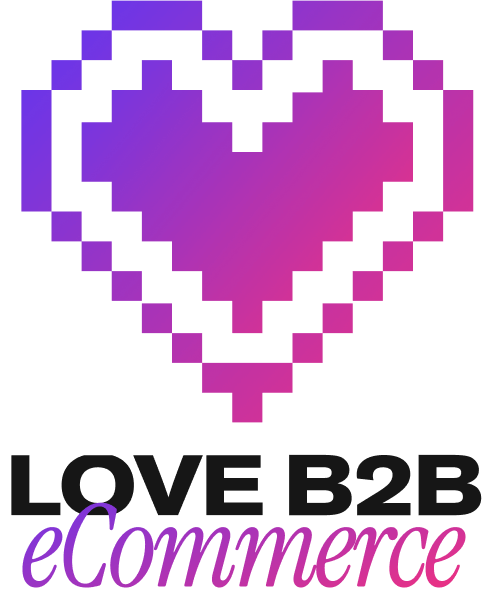For many B2B eCommerce businesses, the challenge isn’t attracting customers to their platform - it’s ensuring those customers actually use it. That’s where a structured onboarding process comes in…
In this guide, we’ll explore what B2B customer onboarding really means, why it’s so critical for eCommerce growth, and five B2B eCommerce customer onboarding best practices. These insights will help you master how to deliver a B2B customer onboarding process that delivers real results.
What is B2B customer onboarding?
B2B eCommerce customer onboarding refers to the process of helping wholesale buyers get set up, understand, and confidently use your eCommerce platform.
Traditionally, this often involved sending out a login link and hoping for the best. Now, as B2C-style experiences are becoming an expectation within B2B, that’s no longer enough.
Modern onboarding is about more than just equipping buyers with an ordering tool; it’s about guiding them through the process. When done well, onboarding reduces confusion and friction, builds trust, and encourages repeat purchasing behaviour.
Why is B2B eCommerce customer onboarding so important?
Onboarding wholesale customers to your platform successfully is an essential step in building long-term relationships. A smooth onboarding experience can be the difference between a browser and a loyal buyer.
For B2B companies, onboarding is often a high-risk drop-off point. Many wholesale buyers are shifting from traditional ordering methods (via phone, email, and spreadsheets) to online platforms. If their first eCommerce experience feels confusing or impersonal, they may revert to old habits - or worse, explore other suppliers.
By contrast, a great onboarding journey helps customers see immediate value. It manages and meets expectations, makes ordering intuitive, and establishes confidence in the platform.
What does a good B2B customer onboarding process look like?
eCommerce is fundamentally about efficiency - making it easier for customers to order, reorder, and manage their business needs.
Effective onboarding should speed up adoption, meaning your customers start using your platform faster, which also means that revenue comes in sooner. A good onboarding process will also begin to build loyalty from day one; positive experiences early on create trust and lead to repeat purchases.
As a benefit to both your customers and team, a smooth set-up and training resources also mean less reliance on your support function. Think fewer ‘How do I log in?’ queries! This way, you can capture more data and better understand buyer behaviour, too.
Want a real-world example? SparkLayer customer, Gentec, created an onboarding video resource to guide buyers through their online ordering process. The result? 100 fewer support tickets per month. As a result, their team were freed up to spend time on more value-added tasks, and customers felt confident in self-serving.
Our top five B2B eCommerce customer onboarding tips
1. Keep it simple
Onboarding should, at its core, be straightforward.
That means going through the basics and removing as much friction as possible - in the easiest way possible.
Don’t assume that your B2B buyers will automatically understand your new ordering portal. Even if it feels intuitive to your internal team, remember that your customers may have very different expectations or digital comfort levels. For those moving from emailing over or calling in their B2B orders, this is an especially big shift!
Make it easy for prospects to get started with exploring your ordering platform - consider providing a visual or video guide. Let them know how to log in, browse products, view pricing, and place their first order. Minimise as many steps as possible and use accessible, non-technical language. Many businesses include an onboarding video link directly in their welcome email. It’s a simple way to help customers see the process in action and remove friction from day one.
2. Send personalised invitations
Personalisation is huge within B2C, so it only makes sense that B2B buyers are now expecting a similar experience.
Your first communication with new prospects sets the tone for your relationship, so make sure it feels bespoke and intentional. Create a launch email campaign letting buyers know about your ordering platform - you can do this when you get new customers, replatform, or as simply as a refresher!
Communicate what the platform is, and why it’s valuable - explain the benefits to them and use this to encourage adoption. Let buyers know what to expect, such as what link to click on, any approval steps, and the timeline of getting their account set up.
It’s also crucial to provide a point of contact for ongoing support - ensure they know who to speak to, where to find troubleshooting information, and what to expect when.
Low on time and resources? Automate the emails! Segment your audience by the most relevant variable, like region, industry, or customer type (e.g. salon vs distributor). This keeps your emails personalised without you having to manually write each one, and ensures each segment feels understood and supported from the very first interaction.
3. Build excitement
Onboarding isn’t just about providing how-to instructions - it’s about motivating adoption. You’re not only teaching customers how to use your platform, you’re ultimately convincing them why it’s worth using.
Highlight the benefits and USPs of your platform and get buyers excited about the changes it could make for them. We’ll use SparkLayer as an example here, but you can use the benefits of whatever platform you’re using.
If you’re using SparkLayer, for example, you could let buyers know about the 24/7 self-service access and their ability to place and track orders whenever they want. On top of this, they’ll have access to dynamic pricing and personalised catalogues, meaning a tailored experience designed for them. You get the idea!
Demonstrate how these features make their day-to-day operations easier - like saving them time (no more back-and-forth ordering via email), improving accuracy (CSV uploads and direct ordering mean less room for error), and full transparency (real-time inventory visibility and order tracking). The more your customers understand the value of your platform, the more eager they’ll be to adopt it fully - and early on.
4. Establish clear expectations
Misunderstandings are one of the biggest barriers to smooth onboarding. Be upfront about what the process involves and what customers can expect along the way.
For example, outline how much time it will take for their account to be approved or set up, how they’ll know when their login is activated, how their order limits are managed, and who to speak to about any concerns.
Setting expectations early on reduces frustration and makes customers feel guided and informed.
Go one step further and ask for feedback during onboarding to smooth things over and reduce the risk of early-stage churn. Ask if any steps in the onboarding process weren’t clear enough, or if there are features they don’t fully understand.
These small questions reveal where the friction points are and give you the chance to fix them quickly - not only to encourage that specific customer to engage, but to create a better experience for future customers, too.
5. Offer ongoing support
The biggest onboarding mistake many companies make? Stopping too soon!
B2B eCommerce customer onboarding isn’t complete once a customer logs in. A successful strategy involves ongoing support and upskilling of your customers. This boosts retention, loyalty, and is more likely to lead to larger order values.
Keep support proactive by running live, drop-in onboarding webinars or Q&A sessions - this way, your customers feel brought along on the journey rather than left to their own devices.
Monitor behavioural metrics, such as who hasn’t yet activated their account or placed an order. Use this data to figure out the most common drop-off points and make necessary adjustments to prevent future churn.
Tracking each step of the customer journey also means you can send out automated emails based on relevant triggers. For example, if a customer has logged in but not yet completed an order, set up a workflow that sends them a video guide on how to place their first order.
For high-value accounts, go the extra mile. Offer dedicated, 1:1 onboarding calls or have your sales team build initial baskets on their behalf using tools like SparkLayer’s Sales Agent feature.
The key here is to treat onboarding as a continuous relationship-building activity, not a one-off task.
Putting it all together: the onboarding roadmap
When these steps are followed, you transform onboarding from a checklist into a genuine customer experience. You’ll notice fewer drop-offs, higher early order rates, and stronger long-term loyalty - all key drivers of B2B eCommerce success.
Every time you introduce a new feature, update pricing rules, or refresh your online experience, you have another opportunity to re-onboard and re-engage customers.
The companies that treat onboarding as a continuous process, not a one-time event, are the ones that build loyalty that lasts. The lesson? Onboarding isn’t an afterthought. It’s a growth lever.
You can explore more guides and how-to videos focused on areas for B2B growth in our Love B2B eCommerce hub. Book a demo to learn more about SparkLayer, or request a 1:1 bespoke consultation - whether you’re a SparkLayer user or not!

















